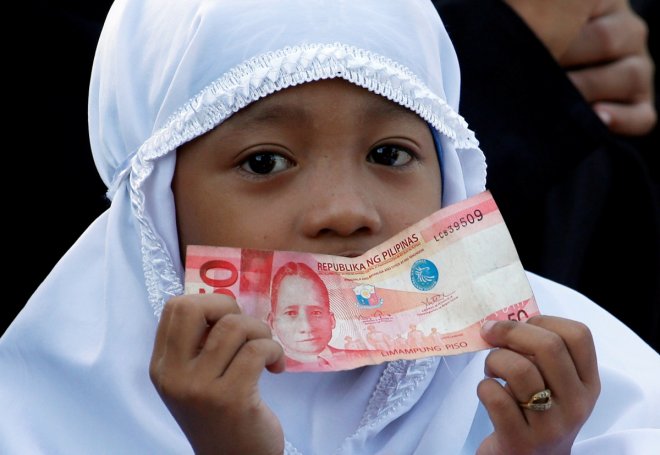
The Philippine peso weakened and shares ended lower on Thursday (26 Jan) as data showed the economy's annual growth rate slowed in the last quarter of 2016 despite showing a better than expected sequential and full year expansion rates.
The Philippine GDP growth moderated to 6.6% annually in the three months to December from 7% in the previous two quarters. Meanwhile, on a quarter-on-quarter basis, the expansion rate increased to 1.7% from the September quarter rate of 1.5%.
The full year growth rate of Philippines came at 6.8%, up from 5.9% in 2015.
The peso slipped to 49.76/USD on Thursday from the two-week high of 49.58 where it closed Wednesday. The main share index ended 0.64% down at 7,323.
The peso seems to have stuck below the 50/USD-mark, which was slightly crossed beyond last November to make a 10-year low (50.24/USD) for the Philippines unit.
The Philippines peso, which was one of the worst performers in Asia, has been predicted to be the most stable one among the regional peers in 2017 in a recent Bloomberg survey.
But technically, the USD/PHP pair is stuck in 49-50 range and on the downside, there are many levels to watch out for such as 48.71, 47.94 ahead of 47.00 a crucial support level which falls on the 100-week moving average.
A break below that will make a reversal of last year's downtrend visible but the 46-mark is still a strong medium term support for the pair before thinking about near 40 levels of early 2013.
The Philippine central bank in its December policy did mention the upside risks to inflation and held the benchmark interest rate at 3% meaning the rate differential advantage will continue to support the peso in the months to come. The inflation rate is at a 2-year high of 2.6% as per the December data.








